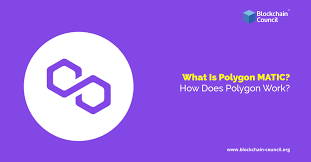What is Polygon?

Polygon
The processing power of the Ethereum network and soaring gas bills are major issues for both service providers and users. According to Polygon, various projects are considering the use of high-performance blockchain compatible with Ethereum. Polygon is a project to provide such Ethereum compatible blockchains and protocols and frameworks for easily building such blockchains and interoperating with Ethereum and other blockchain networks.
In addition to supporting Matic networks, Polygon provides protocols and frameworks for building and connecting Layer 2 blockchain networks compatible with Ethereum, aiming to be the “Internet of Ethereum’s blockchain”.
According to CoinmarketCap’s Polygon page , which provides information about cryptocurrencies, Bridge Smart Contract Development Services Polygon’s block approval time is less than 2 seconds, and each sidechain can contain up to 65,536 transactions per block.
With the gas price (commission) of Ethereum soaring, in 2021 Matic attracted attention as one of the solutions to solve the problem of Ethereum, and the price of the original token MATIC rose significantly.
How Polygon works
Currently, Polygon plans to support various Layer 2 networks in the future, with Ethereum and Matic networks connected as shown in the figure below.
Services can be built as smart contracts on Polygon (currently on the Matic network) . You can move assets from the Ethereum network to the Matic network, and you can move assets in the opposite direction. A group of smart contracts called bridges is used to move assets. There are two types of bridges: Plasma bridges and PoS bridges. For the two bridges, Matic’s developer documentation has a comparison table and recommends PoS bridges. The Plasma Bridge is said to be highly secure, Cross chain bridge development but it should be noted that the types of tokens supported are limited and it takes 7 days to withdraw from the Ethereum network.
You can move assets from the Ethereum network and use them for services on the Matic network. For example, you can rent out assets with Aave, a lending service on the Matic network. A variety of decentralized applications have been launched on the Matic network, which offers scalability and low gas costs not found in Ethereum, including well-known services on the Ethereum network, including Aave.
In the future, Polygon plans to support a variety of Layer 2 networks, and according to Lightpaper, which outlines how Polygon works, it will also be possible to create a dedicated Ethereum instance optimized for the project.
Polygon Lightpaper (PDF)
Blockchains created using Polygon (hereinafter referred to as Polygon chains) are compatible with existing Ethereum tools such as Metamask, and messages can be exchanged between compatible blockchains including Ethereum. There are two types of Polygon chains: a stand-alone chain that validates itself ((1) in the figure below) and a secure chain that depends on the outside for the security layer ((2) in the figure below).
Each blockchain consists of the Ethereum layer, the security layer (when using an external validator), the Polygon network layer, and the Execution layer that runs smart contracts and eWASM from the bottom. Interactions with Ethereum and other Polygon chains are handled at the bottom Ethereum layer.
Services and ecosystems using Polygon
The Polygon website has links to a list of services that use Polygon.
Looking at the service list, there are already famous services on Ethereum such as Aave, Curve Finance, SushiSwap for DeFi services, OpenSea and Decentraland for NFT related services. Since you can borrow money from the DeFi service on Polygon and operate it on other services, it can be said that Polygon is creating an ecosystem where money circulates.
DappRadar, a website for decentralized application statistics, has a new Polygon category where you can see the ranking of Polygon applications. There are some services for which information is not yet available, but for the lending platform Aave, the 24-hour transaction volume as of May 17, 2021 was in May 2021 when the application on Polygon exceeded the application on Ethereum. The number of users since entering is around 2000 per day on Polygon, which is overwhelmingly higher than the maximum of 200 per day on Ethereum. Aave’s transactions on Polygon are moving from 5000 to 8000 transactions per day.
Aave (Polygon) | DappRadar
Aave (Ethereum) | DappRadar
The reason why users choose services on Polygon (on the Matic network) is thought to be the low fees for using the services.
To use Polygon’s services, transfer funds from the Ethereum network to the Matic network. Transferring funds from the Ethereum network costs a considerable amount of gas, Build a cross chain bridge but each service on Matic can be used by paying a very small amount of MATIC as a fee for each transaction. However, if you want to return the funds to the Ethereum network using the services on Matic, you need to pay the gas fee again to move the funds, and it may cost a considerable amount of gas depending on the congestion of the bridge and the Ethereum network.
in conclusion
In this article, I explained about Polygon, which aims at the Internet of Ethereum compatible blockchain. As well-known services use Polygon and more services can be linked and used in the future, users will have more revenue and play opportunities.
We would like to see how Polygon will support various Layer 2 networks, boost the ecosystem, and compete with blockchain interop projects such as Polkadot and Cosmos.